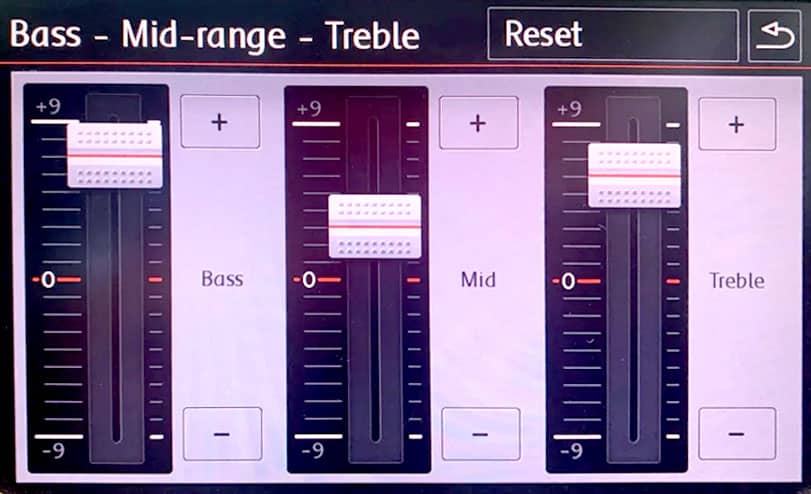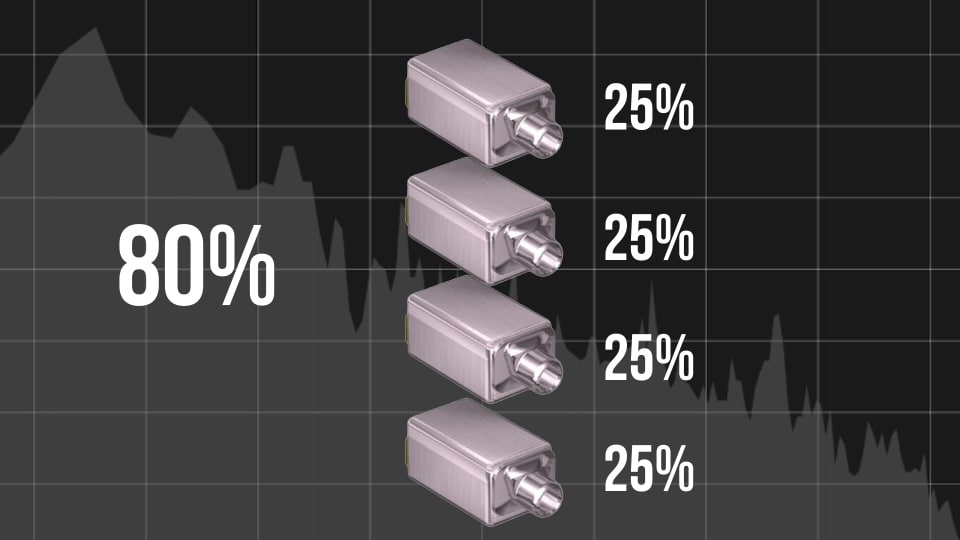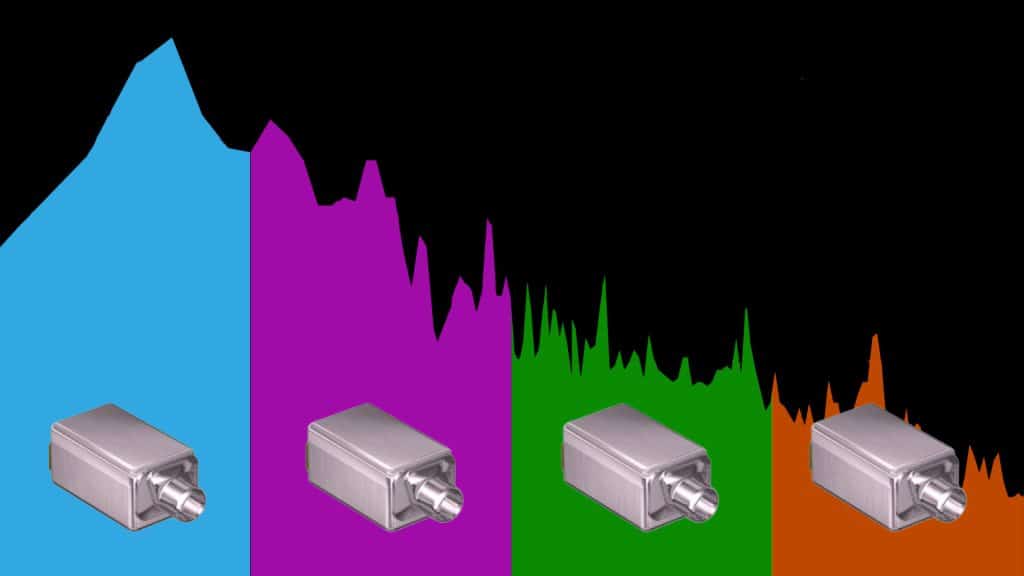We can divide almost anything into at least two categories. It always strikes me as silly when someone pulls out the old “There are two ways to look at this…” card. While true, these kinds of comparisons are never exhaustive, or very creative for that matter. That said, when identifying what is the best in-ear monitor for you…
There are two ways you can describe the sound of an in-ear monitor. Ok, there are WAY more than 2 ways. But as broad categorizations go, there are two ways of looking at the sound of an earphone. You can use many different words (and we will in a bit) to describe these sonic generalizations, but for the sake of this post, we’ll call them CONTOURED and FLAT.
This post will describe these two sound categories and what they mean. We’ll also look at what YOU need as a performer, music lover, engineer, etc. when looking for the right in-ear monitor for you.
A VERY BRIEF HISTORY OF MODERN EARPHONES

First, a little history. Prior to about 2006, most earphones or headphones we’re aiming for a relatively neutral sound. Not too much bass, not too much treble, just the right amount of mid-range. But the mid-aughts, someone finally realized… that’s just not how we LIKE to listen to music.
Imagine getting into a friend’s car or better yet, hoping in a rental car. After finding how to navigate the user interface, a couple false starts, accidentally adjusting the seat warmers (maybe this is just me), hit the TONE or EQ or sometimes just SOUND button and look at the settings. Most of the time, a previous user down the line has adjusted it for an elevated bass and an elevated treble. It turns out, this “sound signature” is what the western word prefers, even in our music tastes. Just look at hip-hop, EDM, pop and modern rock. Give us the low and give us the melody with an articulate vocal. We want to FEEL something.
What happened around 2005-2008? Beats by Dre happened. That’s not to say a “contoured” earphone had not been developed before. But Beats became a huge commercial success, paving the way for companies to play around with the sound signature for different results and different audiences.
It was not as much a change in what was available, but what was widely accepted. People’s minds we’re blown when they heard Beats for the first time. They did not know that a headphone with that kind of sound signature was available. And they LOVED IT. It matched the kind of music they listened to and brought out a “feel” to music listening.
HOW WE DESIGN IN-EAR MONITORS
We often get asked, “How many drivers do I need?”. We will answer this question in detail in another post, but here’s a quick summary for now..
A driver is simply a speaker. By using a Balanced Armature type of driver, we can fit more than one in a single earphone. Each individual driver is designed to optimally output a certain frequency range. Some might be better at low end (woofers), some might be better at high end (tweeters), and some might be better at the super high end (super-tweeters).
Earphone designers can stack multiple drivers on top of each other to for “depth”, or arrange them side-by-side for width. Combine this with the fact that there are dozens and dozens of speaker options, and you can see why comparing one companies 6 driver to another companies 6 driver is not always an apples to apples comparison.
When drivers are stacked, like in our Spire, each driver is more efficient. The Spire has 4 low end drivers, so each one only needs to work on a quarter of the low end signal. This results in lots of headroom (how loud it can be before distorting) so you never run out of low end power.

Spreading out the drivers in earphones allows each one to operate within a specific frequency range. This enables the designer to adjust those ranges and tailor the sound signature to their vision for a particular use case. Essentially, by controlling the drivers’ frequencies, the designer crafts the sound exactly how they want it.

This lets us make monitors that are either flat and accurate or contoured and colored. The question of how MANY you need, is less important than knowing what you will use them for and what sound signature will work best for you.
CONTOURED VS. FLAT VOICING – WHAT DOES IT MEAN?
What do we mean when we say something is contoured or flat? Simply put, a flat sounding monitor does little to alter the sound of the source material where a contoured design modifies the source in some way.
Let’s start with FLAT. Other words that might be used to describe a monitor that is flat are accurate, balanced, even, clean, clear, or un-colored. Of course, there is really no true flat since speaker styles, speaker sizes, speaker enclosures, the volume of air around us, distance from the source, and even our own ear anatomy all make alterations to sound.
Recording studios prefer headphones and monitors that have as flat a sound as possible. This allows them to hear imperfections and make recording and mix decisions without any “coloration”. The same is true for what we call Front of House engineers, the folks mixing live shows.
A contoured monitor, on the other hand, has some coloration. But while flat tuned monitors generally have the same sound “goal”, contour comes in many shapes and articulations.
The most common form of contoured sound is the one from the car example above. The bass or low end elevates over the mid-range or center part of the sound. Then the upper end or treble also hovers over the middle. This is often called a U of V shaped contour.
But a contour can also be low over the mid-range and then mid-range over the high end. That is more of a downward ramp shape.
You can also have a mid-range that is elevated over the low and highs. But that’s for silly people. Just kidding. But really. Broadcasters find this idea as it elevates vocals and presents them clearly. There aren’t many applications where this is required of an in-ear monitor or the best contour shape for stage use though.
Other words you might hear when looking at a monitor that is contoured in some way are colored, dynamic, energetic. You might hear it described as having groove or feel. Monitors in this category might be labeled as powerful.
DESIGNING FOR CONTOUR
When designing a monitor that has a shape to it, we can do it by INCREASING a certain band, or by DECREASING the opposing bands. The effect is relatively the same but not exactly. Boosting the highs and the lows is pretty close to the same sound as just decreasing the mid-range but not entirely the same.
An elevated low end will give you power and feel. A reduced low end tends to favor clarity and openness. More upper end can be brittle and harsh, but when tamed it gives the feeling of space and width. A touch more in the mids can give you warmth and vibe but too much can be muddy and “veiled”.
We have other posts that dive into some of the reasons for this and how we get to the end result, but for this article, you can see that there are multiple ways to design a sound.
SO WHAT IS THE BEST IN-EAR MONITOR FOR YOU?
Now to answer the question “What is the best in-ear monitor for me?” How do you know if you need a contoured in-ear monitor or a flat in-ear monitor?
Use case is generally the biggest factor, followed by preference. On the highest most tipity top level… If you need to hear exactly what the source material is doing, or you have a very wide ranged instrument like a piano, then the FLAT option is the way to go. If you are on stage with an instrument and want a feel, or for your instrument/voice to rise up over the other instruments on stage, we suggest a more colored or contoured earphone.
STUDIO AND FOH SHOULD GO FLAT
Studio and front of house engineers need a FLAT and accurate monitor. One that doesn’t elevate one frequency range over another. One that is honest or true in how it reproduces the source material.
BASS PLAYERS AND DRUMMERS NEED LOW END
Bassists and drummers generally need a contoured monitor with an elevated bass and treble so they can hear the kick and bass, but also articulation. Bass players need to hear the parts of the frequency spectrum that let them know they are playing the right notes. Drummers need to hear the subtleties of a roll or snare. A contoured U or V shape monitor tends to work best. One with a good amount of headroom is preferable!
GUITAR PLAYERS – PLAYERS CHOICE
Guitar players can kind of go either way and this is where preference comes in. Acoustic guitarists have a very wide instrument so the flatter the better. That way all the notes have equal weight in your ears. Electric guitar players tend to like more of a shape to it, sometimes called a “scooped mid” which is not exactly the same but essentially the same as a U or V shape equalization. They tend to like the groove and feel that a contoured monitor brings.
FLAT IS BEST FOR KEYS
Piano, pads, keys – go for the flatter models. Your instrument is super big and wide. A flat model will make sure that the lower and upper octaves don’t sound louder than the middle octaves. Bonus, a model with electrostatic drivers like our Electro will open up the top end and give you more feeling of space in the mix.
VOCALS SOAR WITH A BIT OF CONTOUR
Vocalists can go either way as well. A gently contoured monitor is a great fit. A little bit of low end will give you some excitement and inspiration, but an elevated upper end lets your vocal rise over the mix. There is another factor I can mention here that helps contribute to the sound which is quickness. Our RSM, for example, is quick and punchy so a sound is heard but then fades quickly. This is great for vocalists as you can get some of the contour feel but the mix can stay cleaner and more spacious.
DEEPER DIVE FOR EXTRA CREDIT
If you are looking for some extra credit reading, here is a little bit deeper of a dive without going TOO deep. We’ll save that for other articles.
In-ear monitors get very close to your ear, reducing the amount of space a sound signal must traverse. This can be a benefit over open-air speaker designs as it removes a variable from the mix (see what we did there). However…
Each ear is different. Setting aside any hearing loss from environmental factors or age, all of our ears have a resonance. We don’t, however, all have the same resonant frequency range. For this reason, some of us might hear an earphone different than the average person. Manufacturers describe the qualities of an earphone based on a generic average. We can say that a certain model is flat and balanced because we know it is what most people hear as flat. But, as they say, you your mileage may vary.
In-ear monitor manufacturers who are aiming for a flat or accurate sounding monitor must compensate for those ear resonances. But since they are not always in the same place, we can only do it based on the “average” of most people. This makes making a “FLAT” monitor a bit more difficult than a contoured model.
What may sound flat to one person might not sound as flat to you. Some of that might be in how you have learned to hear things, some might be what you prefer to hear, and some might be anatomy.
We have seen countless people listen to a monitor that is not technically flat and LOVE it. But then when we explain that it has some contour, they immediately dismiss it as a lesser than monitor. Our advice, pick something you love to listen too. Perform with confidence with an inspiring monitor.
Both flat and contoured monitors have a place. Neither is better than the other. One might be more appropriate for certain uses than the other. Hopefully, this gives you a bit better understanding when comparing monitors and deciding what is the best in-ear monitor for your needs.
HELP WHEN YOU NEED IT!
We are more than happy to help answer any questions you have. You can email us or DM us on socials. We also have resources on our site to help you find the exact right monitor for you. Check out our HOW TO BUY page or our BEST FOR… pages.
With Alclair, you can pretty much figure out what’s best for you by asking these questions:
- What do I need a monitor for? What will I be using it to do?
- Do I PREFER a flat or contoured sound?
- What is my budget?
- Do I need to stretch to the next level to get a bit more longevity?
The chart below can help you find exactly what you need by voicing and budget.
Please let us know if you have any questions or we can help you in any way. We are available via email at sales@alclair.com, by phone. You can also hit us up in our socials on Instagram, Facebook, LinkedIn or TikTok!